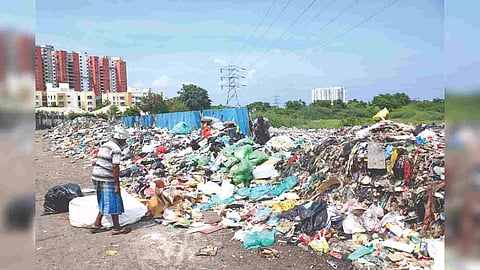

CHENNAI: A survey conducted in Chennai has revealed that lower-income households are generating more garbage than that of higher-income households due to reliance on single-use products. Practice of waste segregation is also low among the lower-income households.
On an average, households with a monthly income of less than Rs 25,000 generate around 5.2 kg of waste every day while those with more than Rs 50,000/month generate around 3.2 kg of waste. Households with monthly income between Rs 25,000 and Rs 50,000 are generating 4 kg of waste.
The survey results, which have been published in the International Journal of Science and Research Archive, said that socioeconomic status, as indicated by income, significantly influences the practice of waste generation in Chennai. Lower-income households may face challenges in adopting various waste reduction strategies or may rely on single-use products often, resulting in increased waste generation.
Researchers of the study surveyed 500 households with varied income and educational statuses. Results revealed that waste segregation was less common among the lower-income homes than those with higher income. While only 30% of lower-income homes segregate waste, around 60% higher-income households in the survey segregated waste.
The report added that the survey demonstrated a positive correlation between education level and recycling rates. Higher-educated households exhibit higher recycling behaviour. This finding underscored the role of education in promoting sustainable waste management practices.
It suggested that educational programmes and awareness campaigns played a vital role in improving recycling rates in Chennai. “The study informed policymakers and waste management authorities in Chennai about the need to develop targeted interventions that addressed income inequality and education disparities,” the report added.
Moreover, Chennai residents commonly recycle paper with a recycling rate of 80% followed by plastic with a recycling rate of 65%. Recycling rate of glass and aluminium cans were 45% and 30% respectively.
“Identifying the most commonly recycled materials provided insights into the preferences and habits of Chennai residents. Waste management authorities could use this information to engage with the community in recycling efforts more effectively,” the report pointed out.